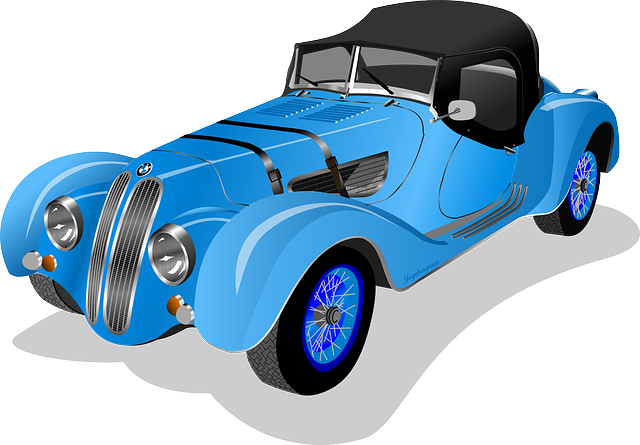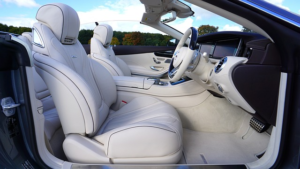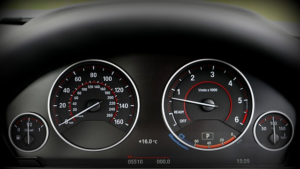EV Drivers Love That Quick Acceleration – And That’s Forcing Companies Like Pirelli To Rethink Tire Design – Forbes
The new Pirelli P Zero Elect tire is specifically made for electric vehicles – and their often … [+] enthusiastic drivers.
Pirelli
Full disclosure: I own an electric car, and I love to drive it. What brand or model it is isn’t important, but how it works and how it’s different from a gas-powered car (which I also own) is very important.
…….

The new Pirelli P Zero Elect tire is specifically made for electric vehicles – and their often … [+]
Pirelli
Full disclosure: I own an electric car, and I love to drive it. What brand or model it is isn’t important, but how it works and how it’s different from a gas-powered car (which I also own) is very important.
Since we bought the car late last year, we’ve racked up a bunch of miles while our gas-powered SUV has sat for the most part, relegated to dog-transportation duty (NO muddy dogs are allowed on the electric car’s leather seats) and ski trips, since it’s AWD and the e-mobile is FWD. But on balance, it sits most of the time now; I think we’ve put $50 worth gas in it in three months.
One interesting aspect of owning an electric car is how it accelerates. It’s extremely quick off the line what with all that torque, which is then regulated by traction control systems. I can floor the pedal and pin myself (and everyone else in the vehicle) to the seat backs, which is big fun and somewhat addictive, while still maintaining control and not spinning the wheels into a smokey burnout.
Clearly, I’m not the only person who does this, and I’ve noticed in numerous EV forums I follow that many drivers are saying their EVs are going through tires every quickly. Now, that’s understandable if you’re switching off traction control and doing electric donuts, but most people I’ve talked with are not; they’re driving normally, with perhaps some enthusiastic departures from stoplights or on freeway onramps. With the smooth power delivery of an electric motor and traction controls usually regulating any wheel spin, I thought it was odd that tires – the brand seemed not to matter – were wearing out faster than “normal.” As, in much faster than normal.
I got in touch with tiremaker Pirelli about this issue and surprisingly, they confirmed to me that EV drivers were indeed tending to wear through tires faster than ICE drivers. The primary reason: All that electric motor torque, coupled with traction nannies maintaining grip, is giving EV drivers an acceleration experience normally reserved for very powerful gas-powered cars. And it’s… a bit addictive. OK, it’s very addictive, and one consequence of all that fun acceleration is accelerated tire wear.
I talked with Pirelli North America‘s Chief Technical Officer, Ian Coke, who has been with the company for decades. He agreed that EV drivers can tend to chew through tires quicker than normal, and to that end, Pirelli has developed a new tire specifically for electric cars. It’s called the P Zero All Season Plus Elect, as in “electricity” if that wasn’t fairly obvious. Less obvious: The number of challenges Pirelli and other tiremakers face to engineer a tire for the growing numbers of electric cars and the unique wear issues that come with this new era of vehicles. “The requirements of an EV make the job of tire design much more difficult,” Coke told Forbes.com. “The power delivery [from an EV] can be extremely aggressive. The torque in tha power delivery can be high.”
Key among the challenges: Engineering a tire compound that continues to give grip while also offering a life span similar to traditional gas-powered vehicles. With gas-powered cars that are designed to function more as daily drivers, tire makers can build in a lot of toughness for a long service into the compound, which is a combination of rubber (often several kinds) and other substances. Aiding in the construction of the tire are a series of belts, typically made from metal and kevlar. A tougher tire is a bit “harder” and stiffer than a sports-car tire, so it trades longevity for grip. But EVs need both, since their performance abilities – especially accelerating from a stop – are much better than your average minivan or economy car. Trust me, that’s certainly the case with my very basic EV: It can smoke most anything short of a Corvette, Porsche or V8 Mustang off the line. Top speed? Not so much, but suffice to say for a grocery hauler and everyday workhorse, it’s quick. And that quickness has made EV popular, but it also puts huge stree on tires. “The requirements of an EV make the job of tire design much more difficult,” Coke told Forbes.com. “The power delivery [from an EV] can be extremely aggressive. The torque in tha power delivery can be high.” Coke said that their research indicated EV drivers are wearing out tires about 20% faster than average – so you know some people are burning through their tires quite a bit faster than that. But that most people are not aware of the accelerated wear.
Also in the mix: With electric cars having little to no motor discernable noise, tire noise is more noticeable. Coke also had to take the sonic impact into consideration when designing the Elects. “Tires are like four drums on each corner,” Coke said, saying the noise issue is not new, but it “much more apparent in electric vehicles.” But he says the new demands are also driving innovation and research into tire performance, wear and other developmental elements.
Another issue I’ve seen with EV drivers is tweaking the vehicle to maximize range from the battery. Many drivers know that increasing air pressure in a tire lowers rolling resistance (which is how fast the car slows due to friction with the road), which would seem like the logical things to do (I am guilty of doing this). He also said many EVs gamify their energy use so drivers are now more tuned into what can give them more range – including tire pressure. This is certainly true in my experience. But Coke said that while increasing air pressure in a tire does lower rolling resistance – a key goal in the design of the Elect – it also reduces the tire’s ability to grip at the same time, which can be a dangerous trade in adverse conditions or when hard braking or cornering loads push traction to the limit. The result: A skid, slide or possible loss of control in an emergency. Coke says he does not recommend drivers air up their tires and that drivers should maintain the recommended air pressure as specified by the carmaker no matter what tires are on the vehicle. That specific inflation information is typically in the car’s owners manual, and also on a federally mandated placard located on the drivers door sill. He also said that higher air pressure will also contribute to faster tire wear, so any benefit is wiped out by the cost of new tires being needed more often.
Coke said that Pirelli worked to give the new Elect tires a “sweet point” of increased rolling resistance while also maintaining high standards of grip and long tire life – a delicate dance, but one made possible by changing compound formulations and rethinking sidewall construction as well. “There is no magic formula” to achieve top performance in every aspect of the tire’s design, Coke said. He also said many EVs gamify their energy use, and EV drivers are now more tuned into what can give them more range – including tire pressure. This is certainly true in my experience. Coke said Pirelli has tested their EV tires on numerous electric cars the company bought for research purposes. “Our nest challenge is EV trucks,” Coke said, recognizing the relatively sudden development of electric pickups from Ford, Chevrolet, Rivian and others.
More tips: Drivers should continue to rotate their tires per the tire maker’s recommendations no matter what kind of vehicle they drive in order for the tires to wear evenly, no matter if a vehicle has all wheel drive, is electric, a hybrid or gas powered.
Going forward, as electric cars continue to gain market share, they will also likely continue to gain performance as well, keeping tire companies like Pirelli and CTOs like Coke on the cutting edge of tire development. With the new P Zero All Season Plus Elect tires, the company that’s been making tires since the dawn of the automobile has designed its first tire specifically made for the new era of modern electric cars – and soon, electric trucks. It certainly won’t be the last time Coke and his team have to work late to keep the wheels turning.






